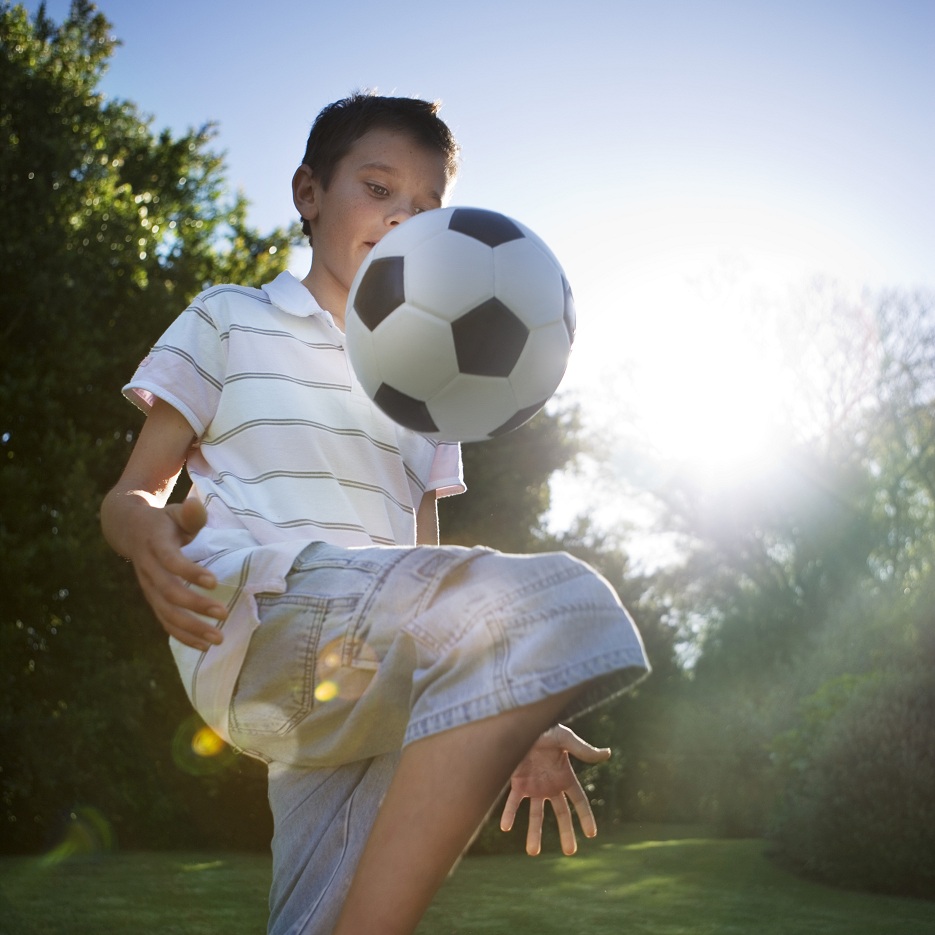Ball Bounce Experiment
Lesson from Teachengineering.org, contributed by the Center for Engineering Educational Outreach, Tufts University.
Grade level: 3-5
Time: 100 minutes (two or three class periods)
Summary
In this activity, elementary students learn about reverse engineering and how to collect and represent data graphically by investigating the abilities of different balls to bounce.
Engineering connection
Materials scientists and engineers identify the properties of many different materials and recommend their best uses. This activity demonstrates reverse engineering, in which the properties of finished products are determined by performing tests on the products.
Standards
International Technology and Engineering Educators Association
- D. Tools, materials, and skills are used to make things and carry out tasks. (Grades 3 – 5)
- J. Materials have many different properties. (Grades 3 – 5)
- L. Requirements are the limits to designing or making a product or system. (Grades 3 – 5)
- D. Requirements for a design include such factors as the desired elements and features of a product or system or the limits that are placed on the design. (Grades 3 – 5)
- C. Compare, contrast, and classify collected information in order to identify patterns. (Grades 3 – 5)
- E. Examine the trade-offs of using a product or system and decide when it could be used. (Grades 3 – 5)
Common Core State Mathematics Standards
- Draw a scaled picture graph and a scaled bar graph to represent a data set with several categories. Solve one- and two-step “how many more” and “how many less” problems using information presented in scaled bar graphs. (Grade 3)
- Add, subtract, multiply, and divide decimals to hundredths, using concrete models or drawings and strategies based on place value, properties of operations, and/or the relationship between addition and subtraction; relate the strategy to a written method and explain the reasoning used. (Grade 5)
- Use a pair of perpendicular number lines, called axes, to define a coordinate system, with the intersection of the lines (the origin) arranged to coincide with the 0 on each line and a given point in the plane located by using an ordered pair of numbers, called its coordinates. Understand that the first number indicates how far to travel from the origin in the direction of one axis, and the second number indicates how far to travel in the direction of the second axis, with the convention that the names of the two axes and the coordinates correspond. (Grade 5)
National Science Education Standards
- Employ simple equipment and tools to gather data and extend the senses. (Grades K – 4)
- Use appropriate tools and techniques to gather, analyze, and interpret data. (Grades 5 – 8)
- Identify a simple problem. (Grades K – 4)
- The position and motion of objects can be changed by pushing or pulling. The size of the change is related to the strength of the push or pull. (Grades K – 4)
- Communicate the process of technological design. (Grades 5 – 8)
- Identify appropriate problems for technological design. (Grades 5 – 8)
After doing this activity, students should know how to:
- Run an experiment
- Collect data
- Present data
- Interpret graphs
- Graph results
- Work in teams
Materials
- 4 different balls to test, such as a super ball, tennis ball, basketball, soccer ball, baseball, etc.
- 1 stopwatch per group
- 1 yardstick per group
- worksheets
- Ball Characteristics Worksheet (doc)
- Ball Characteristics Worksheet (pdf)
- Ball Bounce Experiment 1 Worksheet (doc)
- Ball Bounce Experiment 1 Worksheet (pdf)
- Ball Bounce Experiment 1 Bar Graph (doc)
- Ball Bounce Experiment 1 Bar Graph (pdf)
- Ball Bounce Experiment 2 Bar Graph (doc)
- Ball Bounce Experiment 2 Bar Graph (pdf)
- Test Worksheet (doc)
- Test Worksheet (pdf)
Introduction/Motivation
Background Information
Procedure
- Gather materials and make copies of the worksheets.
- Explain the two tests that will be done to determine the bouncing properties of different balls.
- Divide the class into groups of three students each. One student serves as the recorder, one drops the ball, and one is the timekeeper.
- Assign each group a ball. After running both tests on that ball, have the groups switch balls (rotate) and test a new ball until all balls have been tested by each group.
- Conduct tests and record data.
- Graph group results. (If this activity is not able to be accompanied by a math lesson on graphing, introduce the topic before the activity starts or perhaps after the class has recorded its data and worked through it as a group.)
- Compare results as a class.
Investigating questions
- Could you play basketball with a superball?
- Do smaller balls bounce higher?
- Do heavier balls bounce higher?
- Why are your results different from other groups’ results?
- Why do some balls bounce higher than others?
- What other tests can you perform with the balls?
- Why is the design of a ball important?
Assessments
Additional resources
Soccer ball aerodynamics. An interactive graphic from NASA’s Glenn Research Center lets students plug in different variables – left vs. right foot kicker, for example – and see the course of an animated soccer ball toward the goal.
Can the Brazuca pump up the World Cup? A CNN report on the 6-panel, aerodynamic soccer ball designed for the 2014 FIFA World Cup in Brazil.
Bend it like Jabulani. An eGFI students’ blog post on the 2010 World Cup soccer ball that debuted in the South African games.
SoCCKit – the Energy-Storing Soccer Ball. An eGFI students’ blog post on a soccer ball designed by four Harvard engineering undergraduates that harvests kinetic energy when kicked around and can power an LED light for three hours after just 15 minutes of play.
© 2004 by Worcester Polytechnic Institute including copyrighted works of other educational institutions; all rights reserved.
Filed under: Class Activities, Grades K-5
Tags: balls, data, graph, Materials Engineering, Mathematics, Reverse Engineering, soccer, Sports










